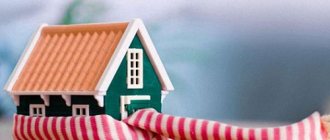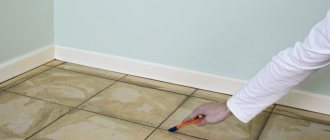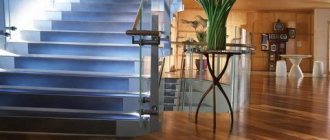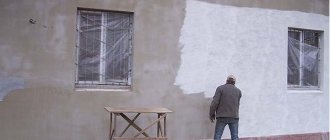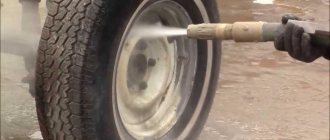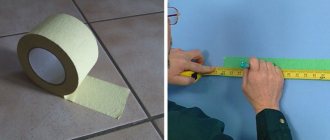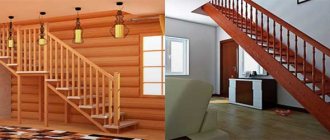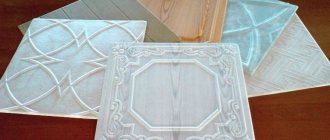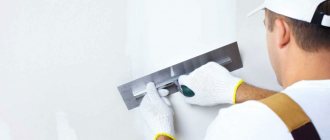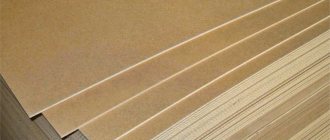Since its inception, parquet has been one of the elite class floor coverings. The natural wood color in combination with an unusual pattern on a subconscious level creates a feeling of comfort and homely warmth in a person. But maintaining an elegant appearance requires careful handling of parquet. Various means can be used to protect the material, but varnish is considered the most popular. High-quality varnishing of parquet will breathe new life into the flooring, due to which the room will regain its original appearance.
Parquet varnishing
Features of the material
Parquet is a practical, but quite expensive floor covering that can last for decades. With the help of this material, the owner of the house can not only create comfort and tranquility, but also emphasize the status of his home. Periodic varnishing will protect the surface of the parquet by creating a special glossy film on it.
Parquet floor
When finishing parquet, you can use not only transparent varieties of varnish that do not affect the color of the wood in any way, but also tinting agents . The latter are able to change the shade of the floor covering, thereby modifying the entire room.
Installation of parquet on a screed without plywood
Solid boards and piece parquet
Prices for Tarkett parquet
Tarquette parquet
Varnishing video
Viewed times: 2,443
Great article 0
Author's rating
Author of the article
Oleg Grishin
Flooring specialist with 10 years of experience. Oleg has something to share with our readers
Articles written
105
- Even more interesting:
- Parquet: types, properties and characteristics
- What is better - parquet or parquet boards?
- Pros and cons of bamboo flooring
Varnish selection
Having decided to varnish a parquet floor, you need to allocate time for work, prepare tools, and also purchase varnish. Construction stores offer many types of varnishes, differing in chemical composition and, of course, cost. Below are the most popular types of varnish.
Parquet varnishes
Table. Classification of varnishes for parquet.
| Type of varnish | Description |
| Alkyd | It consists of oil scraps, due to which the varnish takes longer to dry than other types. The disadvantages of alkyd varnish include high toxicity. |
| Urethane-alkyd | A highly durable, non-toxic product for parquet floors. Urethane-alkyd varnish is quite expensive, but this does not prevent it from being one of the most popular products for parquet. |
| Acrylic | Acrylic varnish contains acrylate copolymers. The material does not have a persistent odor, and it is also safe for the body of adults and children. The disadvantages include the high cost. |
| Polyurethane | Wear-resistant composition that contains polyurethane and other chemical components. The varnish is mainly used for work in commercial premises. |
| Primer | A separate type of varnish used exclusively to increase the adhesion of parquet or change its shade. Can be used in combination with other types of varnish. |
Prices for Loba parquet varnish
loba parquet varnish
Why do they polish parquet at all?
Before purchasing this or that type of varnish, you need to decide on the surface that you should end up with. Varnish can create a glossy, silky or matte surface, and this must be taken into account. Also, some types of varnish can change the color of parquet. It is also necessary to take into account the operating characteristics of the floor covering, or more precisely, the type of loads on the surface. Based on all the factors listed above, you can choose the most suitable remedy.
It is important to choose the right varnish
What you need to varnish your parquet with your own hands
Manufacturers offer a variety of different woodworking products. Parquet varnish composition is rightfully considered one of the most wear-resistant materials to abrasive, impact and foot loads.
Varnish is a composition of various polymers, solvents, hardeners and other additives. When polymerized, it forms a high-strength waterproof film on the surface. It is thanks to this protection that dirt does not eat into the parquet, and the color and texture of the wood remains unchanged over the years.
Parquet varnishes are a separate series from any manufacturer. Available in the following compositions:
- Alkyd;
- Urethane-alkyd;
- Acrylic;
- Polyurethane.
Parquet varnishes.
The first two positions belong to the household series. Urethane-alkyd is characterized by increased strength and a considerable price (for a quality product). Parquet varnishes based on acrylate copolymers were introduced into the product line about 8 years ago, but despite their high cost, they have already won their customers due to their safety for children and adults, as well as the absence of a persistent chemical smell.
The most wear-resistant are premium compounds based on polyurethane. They are used for the production of special series used in gyms, retail and commercial premises, industrial facilities, etc.
Important! It is strictly not recommended to apply floor varnish to oiled or waxed wood. The adhesion coefficient of materials is significantly deteriorated; the coating will not lie evenly and neatly on the base.
In addition to varnish you will need:
- Primers, glazes, impregnations. They give the wood special properties, partially block the pores and reduce the consumption of the base composition. Depending on the purpose they are:
- Antiseptic;
- Fillers;
- Fire-retardant;
- Toning, etc.
- Putties and sealants. Designed for sealing cracks, small cracks, chips and other defects.
- Application tools. These can be brushes, rollers, spatulas, sponges, a spray bottle, etc.
- Bath or containers for mixing multi-component compositions.
- Sanding paper or sanders (belt, planetary, angle) for intermediate processing of the floor.
- Industrial vacuum cleaner.
- Solvents for cleaning instruments.
Tools for applying varnish.
Varnishing of parquet in an apartment, house and other premises is carried out under the following conditions:
- Temperature – from +15 to +25 °C;
- Relative air humidity – 40-60%;
- Wood moisture content: for small dies – up to 12%, for long solids – 6-8%. Exceeding these parameters is undesirable, since raw wood shrinks over time, the varnish cracks and gaps appear between the floor elements.
Tools and materials
To coat a parquet floor with varnish, you need to prepare the following:
- impregnation, glaze or other means to reduce varnish consumption and close pores . The product can be tonic, filling or antiseptic;
- a vacuum cleaner to clean the floor surface from dust (it is advisable to use an industrial type device);
- sealant or putty for sealing various defects, such as chips, small cracks or crevices;
- plastic or metal container for mixing products;
- roller and paint brushes for applying varnish . A spray bottle or a regular sponge can also be used;
We prepare the necessary tools
- putty knife;
- fine-grained sandpaper (if possible, you can use a belt sander);
- protective gloves;
- tape or masking tape to protect walls;
- paint tool cleaner.
Sander
Note! Before work, you need to carefully study the instructions, since paint compositions from different manufacturers may have different consumption and drying times.
Prices for polyurethane parquet varnish
polyurethane parquet varnish
Which primer is suitable?
Due to the fact that different types of primer are applied under the varnish, when choosing this material the following circumstances must be taken into account:
- Application area. If priming of surfaces located on the street is carried out, then compositions for facade work that can withstand atmospheric influences are used.
- Climatic features. Some primer mixtures are intended for finishing wood, which is used in conditions of high temperature and low humidity. To paint surfaces in damp rooms, compositions with a hydrophobic effect are used.
- Drying duration. The duration of this process determines the time it takes to complete the repair work. Alkyd primer dries faster than others.
- The type of material that is applied on top. When processing wood, it is recommended to use transparent primers that emphasize the structure of the surface. However, white compounds are used under the paint.
It is also recommended to pay attention to the composition of the primer mixture. If the material contains harmful substances, finishing work should be carried out outdoors.
Varieties by composition
The types of varnish primers according to their composition are summarized in the table below.
| Type of mixture | Characteristics |
| Acrylic | The composition penetrates deeply into the structure of the wood, completely saturating the material. Acrylic primer is used for painting with any mixtures. This product is odorless, dries within 1-4 hours and is used for interior work. Water is used to change the viscosity of acrylic primer. |
| Silicone-acrylic | Silicone, which is part of the mixture, increases the hydrophobic properties of the soil. Thanks to this material, it is possible to process wood used in damp areas. A surface finished with such soil stops absorbing moisture. |
| Alkyd | Such mixtures are used when the surface is subsequently treated with alkyd dyes. Such compositions dry within 12-18 hours. Alkyd primer can also be applied to a painted surface. Mixtures containing colored pigments form a matte layer after drying. |
| Polyvinyl acetate | This type of soil dries within 30 minutes. To increase adhesion, it is recommended to apply a thin layer of PVA glue after treatment. |
| Polyurethane | This is the most expensive type of primer for varnish. In such mixtures, solvents in different concentrations are used. Also, the primer does not contain pigments. |
| Shellac | This mixture is used to level a wooden surface. Shellac primers close natural pores, thereby preventing resin from escaping. The mixture also creates an insulating layer, so the composition can be applied to raw materials. |
See also
Top 12 types of aerosol paints in cans for decoration and how to use
By properties and purpose
Primers used for varnish finishing are also divided into the following types:
- Antiseptic. Such mixtures contain components that prevent the formation of mold and mildew, prevent wood from rotting and repel insects and rodents.
- Strengthening. Such mixtures strengthen wooden structures, extending their service life. Such compositions are presented as deep penetration primers and increase the resistance of the treated surface to weathering.
- Hydrophobic. These primers are used for finishing wood used outdoors or in rooms with high humidity.
The type of primer is always indicated on the container with the mixture.
Material calculation
How much varnish will be needed for the repair? First you need to measure the length and width of the room in meters and multiply these numbers. The result should be the full area of the room. If the room has a more complex shape, for example, it is lined up with the letter “P” or “G,” then you need to divide the surface into rectangles and calculate the area of each of them. The values added together are the total floor area.
Calculator for calculating the area of a quadrangular room
Go to calculations
Determining the varnish consumption
After the calculations, you should study the information on the can of varnish. It shows the average consumption: how many square meters can be painted with one liter of varnish. It is very convenient when the can indicates the surface area that can be painted with one can when applied in one layer. Based on this information, you can calculate how much varnish is needed for a particular room.
Calculate in advance how much varnish will be needed for the parquet
Types of varnishes for parquet
Parquet coated with varnish is protected from moisture and is more aesthetically pleasing.
This product is produced separately from conventional varnishes and is a particularly resistant coating. Other varieties should not be used, they can only cause harm.
There are the following representatives of LC products for parquet:
- aquatic;
- alkyd;
- urethane-alkyd;
- polyurethane.
Water-based varnishes will have to be renewed more often.
The latter are considered the most resistant to wear. Some of them, consisting of two components, are intended for varnishing large areas.
Water-based varnishes are harmless, they are practically odorless, after working with them, painting tools can be easily washed with plain water, but they are prone to rapid abrasion, especially single-component ones. Two-component ones are more reliable.
Representatives of urethane-alkyd and alkyd varnishes are stronger than water-based varnishes, inexpensive, but have an unpleasant odor due to the content of solvents in them. When working with them, you need to protect your face and hands. Among alkyd varnishes, there are also one-component and two-component ones, with a hardener.
Parquet varnishes are:
- matte;
- mother-of-pearl;
- glossy.
The quality of each varnish is approximately the same; the consumer chooses one of the representatives based on personal aesthetic preferences.
Starting to varnish parquet
Varnishing a floor is a very labor-intensive process consisting of several stages. We are talking about preparing the coating, removing dirt, applying primer and varnish. For a high-quality result, careful preparation is required. Below are step-by-step instructions for coating a parquet floor with varnish, following which will simplify this process.
Step 1. Prepare all the necessary tools for work. If the varnish is solvent-based, then in addition to the above materials, you need to prepare a solvent.
Preparing everything you need
Step 2: Remove the baseboards or protect them with masking tape.
Covering skirting boards with masking tape
Step 3. Cover the windows with paper or regular newspapers. This is done to protect the future coating from sunlight.
The windows are covered with newspapers
Step 4: Carefully inspect the floor. If you see protruding heads of nails or screws, press them deeper. If the floor was covered with a protective layer of wax, then it needs to be scraped off.
Floor inspection
Step 5. Clean the cracks between the parquet boards using a brush. All existing cracks must be filled with putty.
Preparing the floor surface
Step 6: Sand the floor with fine-grit sandpaper. If possible, you can use a sanding machine. This will significantly speed up the preparatory process.
Sanding the floor with sandpaper
Step 7 : Protect yourself before you start. Wear rubber gloves and work clothes that you don't mind. You also need to select a brush according to the width of the board.
Wear rubber gloves
Step 8: Start priming. Open the jar of soil and mix the contents with a wooden spatula or a ruler. Mix thoroughly, but gently so as not to create foam.
The primer is mixed
Step 9: Pour a small amount of soil into the tray and dilute it according to the manufacturer's recommendations.
The primer is diluted
Step 10: Start applying a coat of primer, moving the brush along the grain of the wood. If the primer is colored, paint one board from start to finish at a time. This will avoid changing shades.
Application of the composition
Step 11. Be careful not to leave any area of the floor untreated. Usually one layer of soil is sufficient.
You need to move along the fibers
Step 12. Wait until the primer is completely absorbed and dry. Check the jar - it indicates the drying time before the next layer.
Wait for the primer to dry
Important! After the primer has dried, the floor must be sanded again with fine sandpaper. Only after this can you start varnishing.
Step 13. Start varnishing. Mix the varnish thoroughly for 3-5 minutes. Start from the farthest corner and gradually work your way towards the exit.
Let's start applying varnish
Step 14: Hold the brush vertically so that only the tip of the brush touches the floor surface. You can use the same brush that was used to apply the primer.
The brush must be held vertically
Step 15: After applying the first coat of polish, wait until it dries completely. The time it takes for the polish to dry is indicated on the can.
Floor varnishing
Step 16: When the varnish is dry, carefully sand the first coat to remove any raised lint, bubbles, or stray debris.
Re-sanding the floor
Step 17: Remove any accumulated dust from your hardwood floors, then wipe the surface with a clean, lint-free cloth.
The floor surface is wiped
Step 18 Apply the next coat of varnish. The number of layers may depend on several factors (type of wood, quality of varnish, etc.), but practice shows that 2-3 layers of varnish will be enough.
Applying a second coat of varnish
Step 19. Apply the last layer from the window to the exit. There is no need to sand the floor after this – the floor already looks flawless. After a week, you can nail the baseboards into place (if they were previously removed) and bring in the furniture.
No need to sand the floor anymore
Purpose of varnish
In areas of severe abrasion, use polyurethane compounds.
When choosing parquet varnish, you should pay attention to its functions and for what premises it is intended.
Polyurethane and urethane-alkyd moisture-resistant varnishes are used:
- in the kitchen;
- bathroom;
- at the dachas.
For large areas with high traffic, a water-based varnish based on polyurethane resin will do.
It is best to coat the floors in a nursery with a water-based polyurethane varnish that dries quickly. Its packaging bears the inscription “EN 71.3”.
If the floor is subject to heavy loads, a urethane varnish with an anti-slip effect is applied to it.
How to prepare parquet for applying varnish?
Be sure to prime the surface before varnishing.
To varnish the parquet with your own hands, you need to carry out some preparation.
You need to decide on the materials and tools. Of these you will need the following:
- wood primer;
- azure, which is used to tint parquet;
- putty for parquet;
- solvents;
- varnish
The tools you will need are:
- brushes of various sizes;
- putty knife;
- container for stirring varnish;
- velor roller;
- sandpaper 220-440 units;
- industrial vacuum cleaner;
- Grinder.
It is better to rent large professional equipment.
Preparing the base
You need to start work by removing furniture and other items located in the room. All interfering nails and damaged dies are removed.
The resulting holes can be sealed by kneading a paste. It consists of sawdust and wood glue.
Small gaps in the parquet are eliminated with wood putty. Everything should dry out, the developed resin can be freely removed with gasoline.
Wax or oil floors are cleaned with white spirit to avoid clogging of the sanding apparatus, as well as for good adhesion of the varnish to the wood.
The old parquet will have to be scraped several times
. Having received a clean surface, if necessary, the formed thresholds between the dies are scraped, the surface is leveled, and the old layer is removed from the wood. All this is done by a scraping machine and, if necessary, more than once.
Next, the floor is cleared of debris and sanding begins with a special machine. As a result, the floor becomes absolutely flat, and the wood returns to its original appearance. Then use an industrial vacuum cleaner to remove all dust. For more information about varnishing parquet, watch this video:
If necessary, the new floor is prepared in a similar way. If the condition is excellent, newly laid parquet blocks can be immediately sanded and varnished.
What problems might you encounter?
Often, after varnishing, defects may appear on the floor surface that greatly spoil the appearance of the room. Some of the defects arise due to the fault of the master himself, and some are due to low-quality paint and varnish materials. Let's look at the most common problems that you may encounter after varnishing a parquet floor.
Some difficulties may arise during varnishing
The varnish takes a long time to dry
Failure to comply with the technology for applying or mixing varnish (for example, not enough hardener has been added or the varnish layer is too thick). In this case, there is no need to resort to additional stimulation using heaters. Drying should be natural. The duration of polymerization can reach several weeks, and in some cases up to a month.
The varnish should dry naturally
Whitish stripes
Such defects on the parquet may appear due to the use of dirty tools. Unfortunately, it is impossible to eliminate the whitish streaks that appear. Therefore, before starting painting, all tools must be thoroughly cleaned.
It will not be possible to wash out whitish streaks
Multicolored parquet
There should be no drafts in the room during painting, as they will lead to uneven drying of the surface. Also, due to drafts, the parquet may become covered with small air bubbles.
Photo of parquet floor
Wrong shade
As you know, varnish is a chemical substance that can “burn through” wood, so the surface of the parquet darkens several tones. The change in shade depends on the type of wood. All these nuances must be taken into account at the painting planning stage.
The floor becomes darker after varnishing
Varnish peeling
It is not recommended to use formulations on different bases, as this is fraught with unpleasant consequences. All products must be purchased from one manufacturer, and if the varnish nevertheless begins to peel off after drying, then it will no longer be possible to save it. Re-varnishing of the parquet with preliminary removal of the coating is required.
On a note! Compliance with all the rules when varnishing will protect the parquet from various damages, as well as create an attractive appearance in the room. A well-applied varnish will last for many years.
What affects the service life of parquet
How to care for varnished parquet
Now let's look at a few tips for caring for parquet boards:
- The indoor temperature should be at least 12 degrees.
- Try not to carry out wet cleaning.
- Use special compounds and a vacuum cleaner with a soft brush to clean the parquet surface from dust.
- Small debris (such as sand) can cause scratches on the floor surface.
- Forget about walking on hardwood floors in street shoes. Don't even dare walk on it in heels!
Additional recommendations
To avoid future problems when varnishing your floor, you must follow these recommendations:
- When using a two-component varnish, brushes must be washed after use . But if a one-component varnish is used, then the brushes can be left in the container without bothering with cleaning them;
Parquet restoration - before and after photos
- When varnishing a parquet floor with a roller, do not make diagonal movements . Otherwise, the varnish will lie on the surface in an uneven layer, which will ultimately lead to the appearance of streaks;
- Regardless of the type of varnish used, it is important to follow safety precautions when working . It must be remembered that varnish is a chemical substance. Prolonged inhalation may be harmful to health.
Observe safety precautions when applying varnish
Beginners who have not previously encountered parquet varnishing should understand that the surface may not turn out perfect the first time. Therefore, to begin with, it is advisable to practice on less noticeable areas of the floor. This will allow you to get the hang of it so that varnishing the main part of the floor is successful.
Is it necessary to prime wood for varnish?
It is believed that varnish can protect wood from the negative effects of the environment. However, this composition partially solves this problem.
Wood must be primed in cases where the material is constantly in contact with water or is used in conditions of high humidity. In such situations, varnish is not able to prevent the development of mold or rotting.
However, not only such problems are solved by the primer.
Purpose and properties of soil
Treating wood with a primer has several purposes:
- Surface disinfection. The tree is susceptible to rotting. This process is accelerated in conditions of high humidity or against the background of the proliferation of pathogenic microflora such as fungus. A primer with antiseptic properties prevents the development of these processes and also repels insects.
- Surface strengthening. Wood has a porous structure, which is why the material becomes less strong over time. The primer penetrates deep into the surface, bonding the fibers together and thereby increasing the service life of the structure.
- Decreased absorption capacity. Wood absorbs moisture well, and the soil prevents this.
- Increased adhesion. Thanks to the primer, the surface acquires a rough structure, which increases the level of adhesion of the applied paint. This allows you to reduce the consumption of finishing material.
- To level the surface. The soil, as noted earlier, binds the fibers together. Due to this, the paint applied on top forms an even layer after drying.
- Preventing the formation of defects. Wood contains resins, tannins and other substances that seep out over time. Because of this, noticeable stains form on the surface. The primer layer prevents substances from escaping.
It is necessary to prime wood in the following cases:
- the material is used in the external environment;
- wood is located in rooms with high humidity;
- defects have been identified on the tree;
- wooden structures located indoors are in contact with external walls;
- the wood is subsequently painted or varnished.
It is recommended to prime all types of wood, regardless of the characteristics of the latter.
Pros and cons of applying a primer coat
Applying a primer layer under varnish has the following advantages:
- a layer is formed that protects against rot, mold, fungi and rodents;
- the service life of wooden structures increases;
- wood can be used outdoors and in conditions of high humidity;
- the consumption of paints and varnishes is reduced;
- the strength of the wooden structure increases.
See also
Description of Indian Holi colors and how they are made, rules of application
The disadvantages of surface priming include the following:
- the cost of the work may ultimately exceed the costs incurred when painting without prior priming;
- finishing takes longer, since before varnishing the surface it is necessary to wait until the primer dries.
Expert opinion
Zakharova Irina Yurievna
Cleaning professional with 15 years of experience. Our best expert.
Ask a Question
Despite these disadvantages, priming wooden surfaces has become a mandatory procedure, which is carried out in almost all types of finishing work.
Applying varnish
Painting parquet with varnish includes the following steps:
- Test painting of an area in an inconspicuous place - to check the shade of the chosen product and whether the final result meets your expectations.
- Application of primer-varnish. It dries in natural conditions, without direct sunlight and drafts.
- Applying base varnish. Varnishing is done with a roller, using cross-shaped movements, in the direction from the window to the door.
- After the applied layer has dried, grind and remove dust from the surface.
- Similar application of subsequent layers - a total of 3-4 layers are applied, with an interval of 10-12 hours, intermediate sanding and wiping off dust.
The painted parquet board dries completely in about a day. After this, you can walk on it, but the protective film finally acquires its strength qualities only after a week. Until this time, you cannot bring furniture or heavy things into the room.
How to varnish parquet with a brush?
Working with a brush is the most difficult way to achieve a perfect varnish surface. For such work, take a brush of at least 80 mm, with high-quality bristles that do not fall out.
Particular attention should be paid to the thickness of the varnish. If it does not flow from the brush, then it needs to be diluted. The brush should always be “wet” with varnish while applying the varnish.
Make movements with your hands smoothly - in a U shape, so that each subsequent strip overlaps the previous one.
Working with a brush, paint the floor surface in at least two layers, preferably three.
At the end of the work, the brush is washed with a solvent, if the varnish is acrylic, with water. Do not forget to close the container with varnish to prevent the formation of a surface film.
How to properly prime parquet
When applying primer, it is very important to adhere to the golden mean: a thin, skimpy layer will not be able to cover the floor evenly, which means that the finishing varnish risks entering into an unpredictable reaction with the wood.
On the other hand, a too dense layer of solution forms sagging, which also does not look comme il faut. A soft brush, roller and rubber spatula are suitable for processing parquet; It is more convenient to pour the liquid composition into a special bath. Of course, the floor must first be cleaned of dust, and there should also be no traces of old varnish, wax or oil on it. The primer mixture is distributed in the direction of the wood fibers; after the first layer has dried, it is recommended to lightly sand it with sandpaper. Later, the smooth coating is impregnated again and thoroughly dried (fresh wood is always primed twice; “old” parquet usually needs a single procedure). Colorless or tinted varnish is permissible only after the base product has completely dried.
Optimal conditions for priming work are temperatures within +18-25 degrees and air humidity of about 40-75 percent.
Rating of the best brands
The presented rating is based on user reviews collected on the Internet. The primer grades indicated in the list are not suitable for all wood operating conditions.
Belinka Base
This soil provides protection against:
- rotting;
- mold formation;
- damage to the material by woodworms.
Such characteristics led to a high price: 5 liters of Belika Base cost more than 2.6 thousand rubles.
Biofa 3754
A universal mixture used for treating uneven surfaces and types of wood (mainly coniferous species), which absorb applied compounds well. This material is recommended for exterior and interior decoration. Biofa 3754 does not contain solvents, which allows the mixture to be used in conditions with poor ventilation. A 1-liter container of such primer costs about 1 thousand rubles.
Tikkurila Euro Primer
A primer, or deep penetration primer, of a Finnish brand is used for finishing external surfaces. The material contains components that give the mixture antibacterial and disinfecting properties. Despite these characteristics, 3 liters of this primer cost 400 rubles.
"Tex"
This brand produces primer mixtures intended for treating porous surfaces. Such compositions can be used for:
- paint and varnish coatings;
- wallpaper;
- decorative tiles.
Tex brand soils have the following features:
- suitable for treating surfaces in rooms with normal or high humidity;
- fireproof;
- do not emit an unpleasant odor;
- dry quickly;
- strengthen wood and other porous materials.
Tex brand primers penetrate deep into the wood structure, binding the fibers. Thanks to this effect, the indicated results are achieved.
